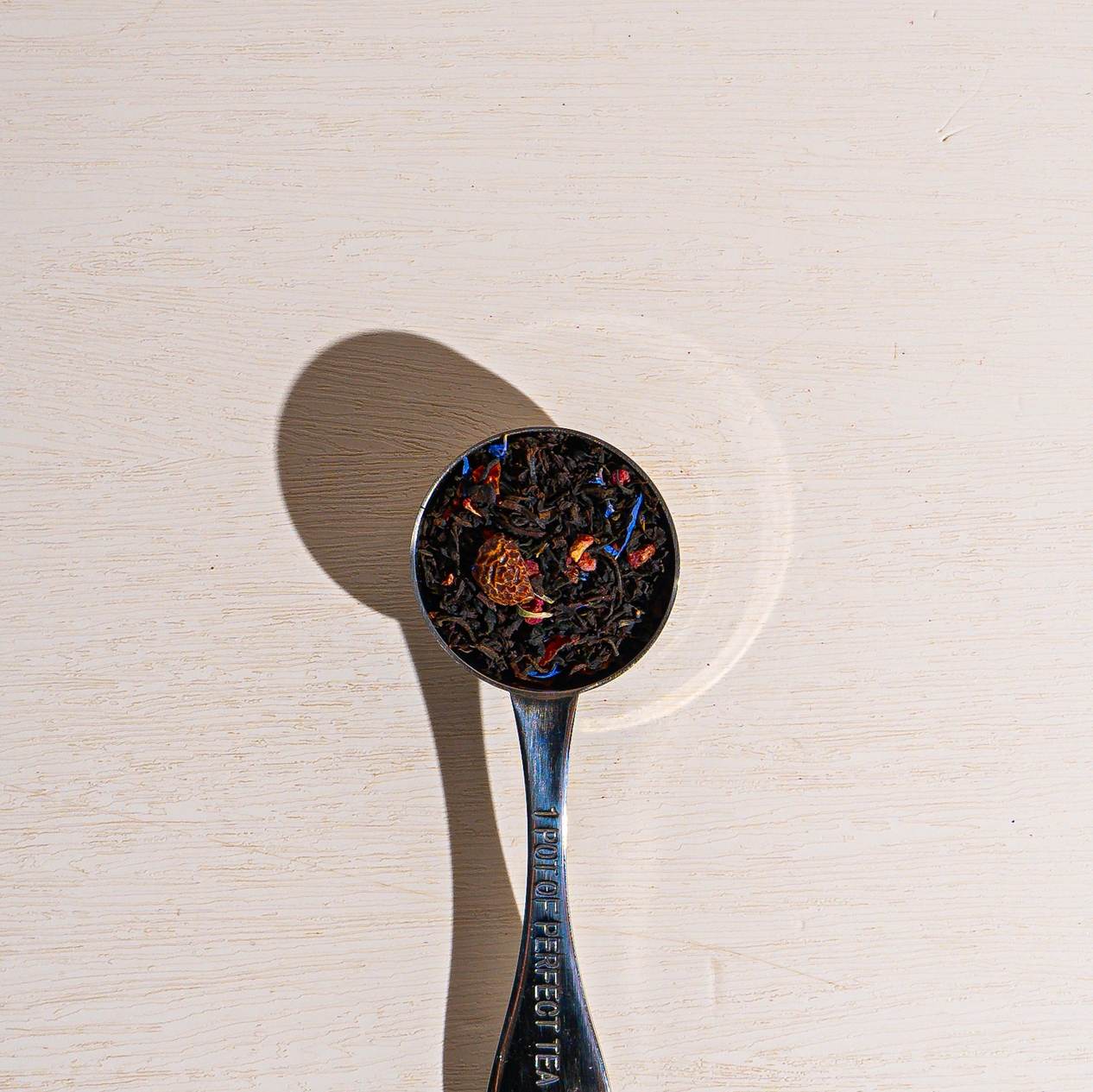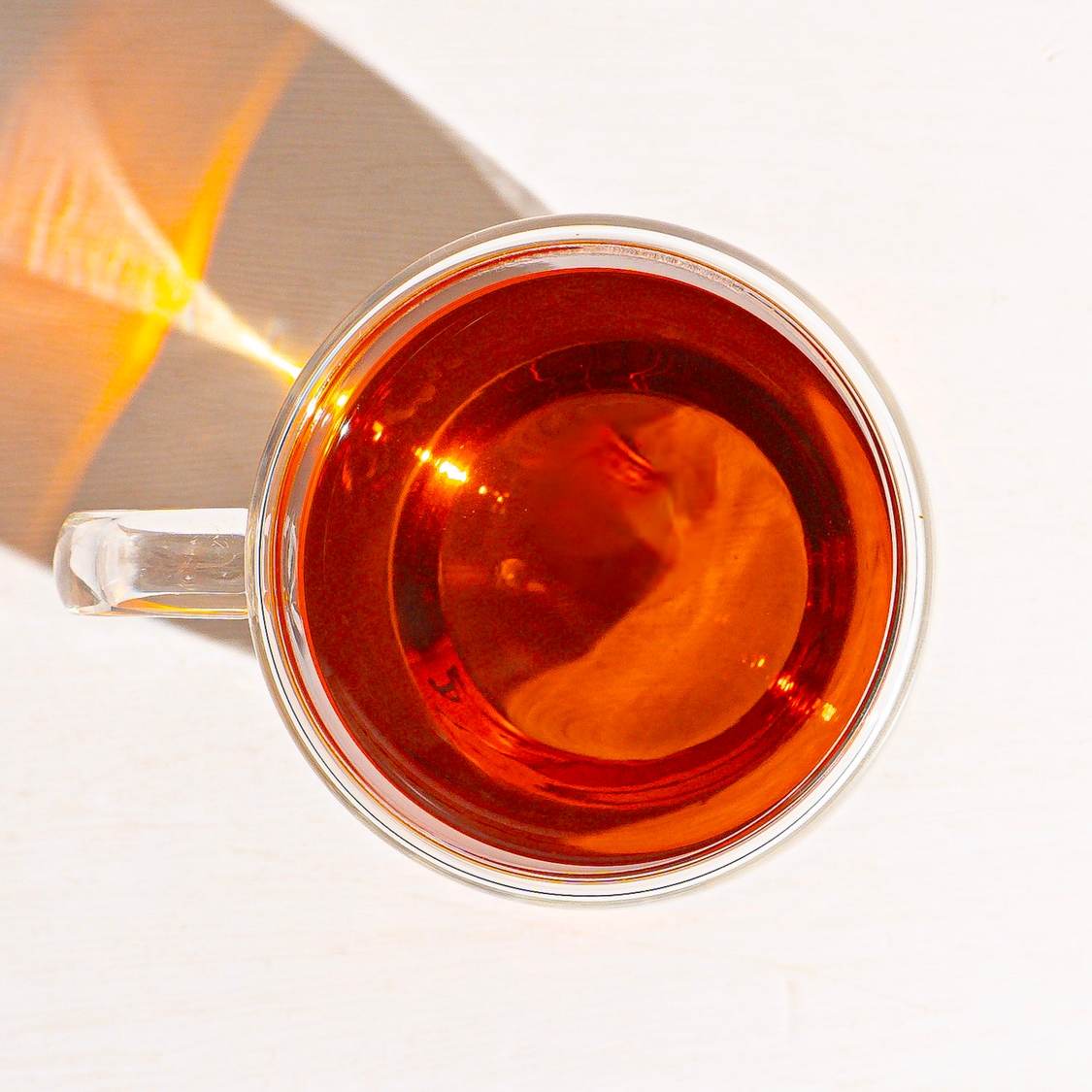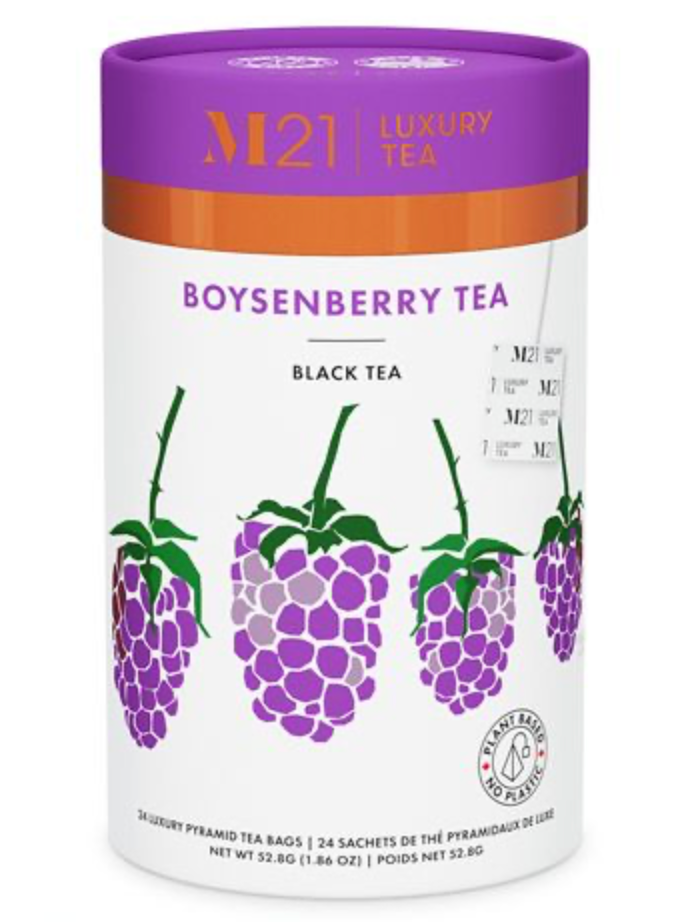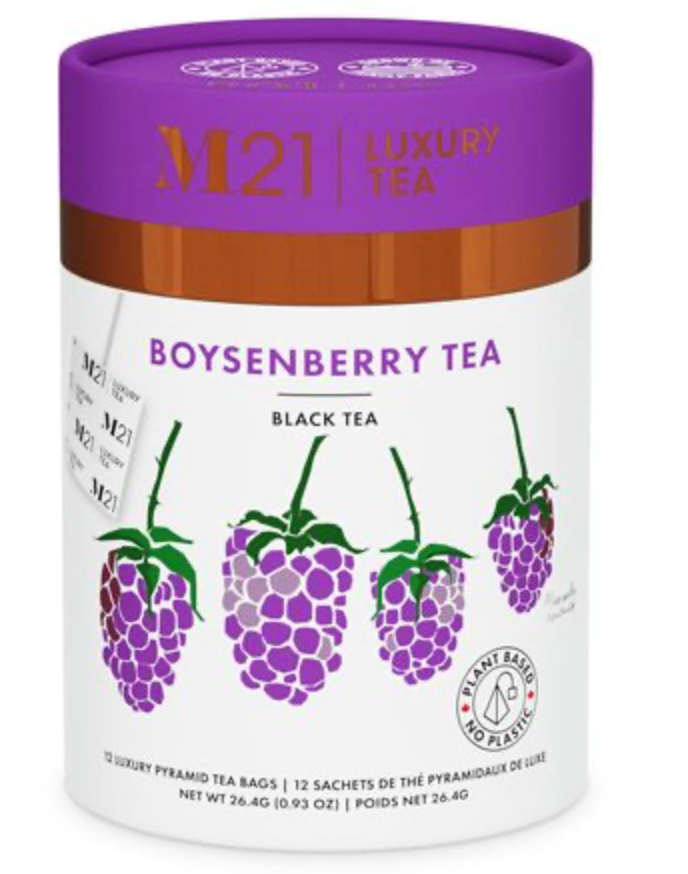1
/
of
3
Boysenberry Tea
1 review
Our Boysenberry tea has an excellent black tea base that is infused with the essence of Boysenberry. Incredible hot or iced.
Taste Notes: Slightly tangy, right amount of sweetness
Luxury Ingredients: Black tea, Rosehip + Raspberry pieces, Cornflower petals, Natural flavors(organic compliant)
Origin: Sri Lanka / Kenya / India / Chile / China / Albania
Made with all natural, organic-certified flavorings.
This tea supports the Ethical Tea Partnership
All Camellia sinensis in our blends contributes to a fairer, more sustainable tea industry.
CAFFEINE CONTENT | HIGH
Cup per oz
10-12 cups per 1 oz
Couldn't load pickup availability
 1-2
1-2
Tea
Spoons


205-212°F
In 475 ml (8oz)

 4-6 mins
4-6 mins
 1-2
1-2
Teaspoons

 205-212°F
In 475 ml (8oz)
205-212°F
In 475 ml (8oz)

 4-6 mins
4-6 mins






M
Mike Russo Love the taste of this tea!!!!







